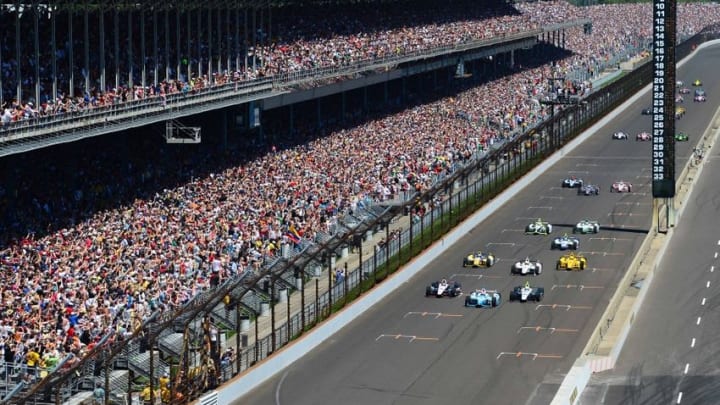The haulers have arrived, and the cars are on track at Indianapolis. But after hopes for bumping in qualifying, how did only 33 cars end up entered for the 100th Indianapolis 500?
Hopes were high heading into the month of May for the Verizon IndyCar Series. TV ratings looked positive from early races in 2016, and some of the most competitive races in years have led to fantastic finishes. But then the first shoe dropped, with the Grand Prix of Boston being cancelled, though eventually replaced by Watkins Glen. And then the second one fell to the ground, as only thirty-three cars are entered for the centennial Indy 500.
Those excited feelings heading into Indianapolis for a historic race have been tempered a bit, though no one person or team can take the blame for this. The current engine supplier limits already handicapped the field at a maximum of 36 cars, and the costs of upgrading the DW12 chassis with current aero specifications are high. So what truly happened to limit the Indy 500 entries to thirty-three?
One of the biggest problems for many teams and drivers was funding. There certainly was no shortage of qualified drivers to race at the Indianapolis Motor Speedway. Among those with at least one start who will not run this year at IMS include Katherine Legge, Sebastian Saavedra, Bertrand Baguette, Mike Conway, and James Jakes. Many of these drivers had been trying to put together deals for rides that had remained unspoken at the time. But with a price tag of hundreds of thousands of dollars in most cases, piecing together a package like that is easier said than done.
The other major hurdle for many race teams was a simple lack of time. Michael Shank Racing was one of those who tried to put together a last-minute deal to get a car into the greatest spectacle in racing, only to fall short on time to negotiate a way in. Meanwhile, AFS Racing attempted to field Sebastian Saavedra, but simply lacked the time to update the car for 2016. However, not all teams suffered from a lack of time, as after all Grace Autosport worked for a year to find the right team to partner with for the big race, but will be on the sidelines after all in all likelihood.
It is truly unfortunate that the 100th Indianapolis 500 will not have a true “Bump Day” feel to qualifying this weekend. There are many great stories of drivers and teams that made their way into the 500 on the final day in their final run. That drama will be absent on Saturday and Sunday, and that will disappoint many fans. It certainly doesn’t help that the schedule has been compacted further, meaning late entries have become even less likely. Maybe it’s the changing times or maybe just a challenge of a series battling for visibility against an ever-crowded sports landscape, but without more sponsors and funding coming forward, squeezing thirty-three entries out each May is becoming tougher.
Related Story: IndyCar: Honda Leads First Indy 500 Practice
What do you think, are you disappointed there will be no bumping in qualifying for the Indy 500? What does this say about the centennial edition of the race? Will the 101st race have more entries? Leave us your thoughts below or tweet them to us at @Beyond_The_Flag.
